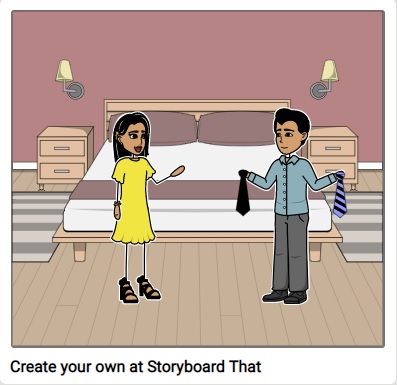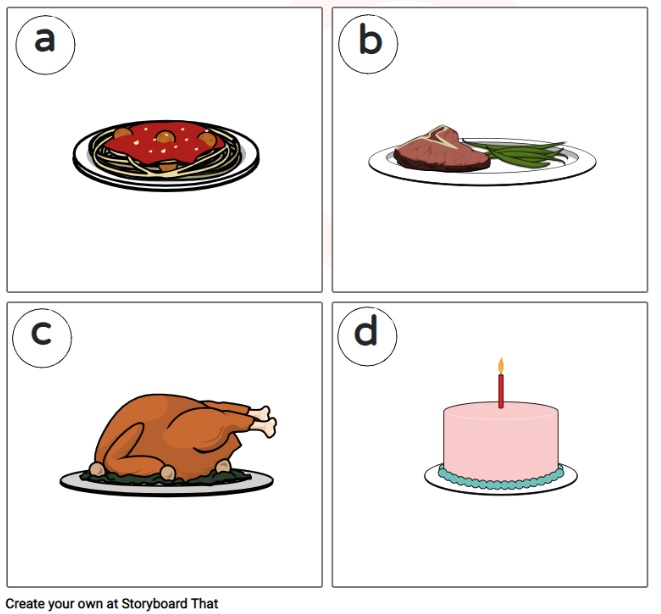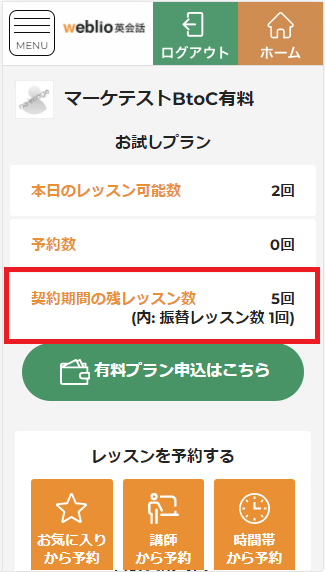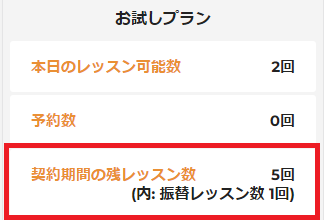平素はWeblio英会話をご利用いただきありがとうございます。
本日は、新しいサービス追加のお知らせです。
この度、「weblio英会話スピーキングテストβ」の提供を開始いたしました。
※本サービスは、試験的に提供するもので、提供内容に変更がある場合がございます。試験期間中は追加料金は一切無く受験いただく事が可能です。
※また、教育機関、または法人としてご契約されている場合にはご利用になれませんので、あらかじめご了承ください。
weblio英会話スピーキングテストβとは
weblio英会話スピーキングテストβとは、通常のレッスン1回分の時間を使い、25分で現在の英会話力を数値化できるサービスです。受験後に送られてくる結果では、スコア以外に今後の学習のアドバイスや、おすすめの教材も確認いただけます。定期的に受験いただければ、英会話力の伸びを確認する事もできます。
レッスンを予約する際に、教材ではなく、スピーキングテストを選択いただくことで、受験いただけます。通常のレッスンの代わりに受験いただけます。追加料金は一切不要です。
スピーキングテストでは、音読、写真描写、質問に対する意見、文章読解などを通して、6つのスキルを評価します。
評価するスキルは以下です。
1)イントネーションとアクセント
2)発音
3)英語表現力
4)リスニング力
5)流暢さと語彙
6)ビジネスでの会話力
「長く続けているが、自分が成長しているのかが気になる」「自分の弱点が、自分では分からない」といったお悩みをお持ちの方は、ぜひスピーキングテストをご利用いただき、今後の英語学習にご活用いただければ幸いです。
スピーキングテストの受講方法
スピーキングテストを受講する場合は、スピーキングテスト対応講師を、お選びいただく必要があります。
スピーキングテスト対応講師以外をご選択いただいた場合には、テストをご利用になれませんので、ご注意ください。

予約の際に、教材選択画面でスピーキングテストを選択し、予約することで、スピーキングテストを受験する事が可能です。
スピーキングテストは全部で10種類あります。
※テストはスコア形式で、10種類がレベルで分かれているわけではありません。
複数回受験される方は、前回自分が使用していない教材をご利用ください。
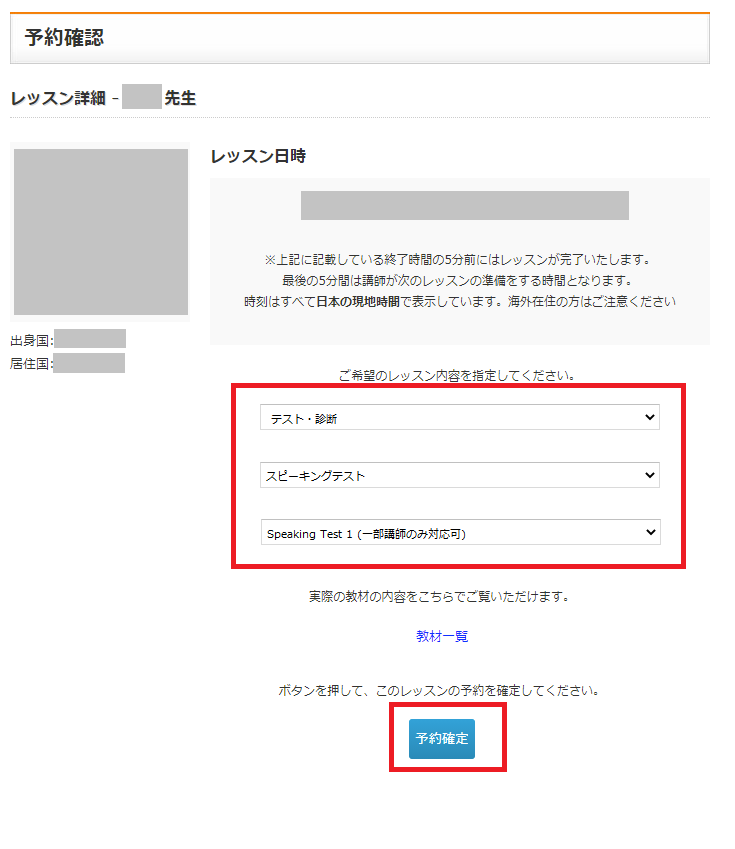
テストの進行内容
レッスンが始まると、テスト問題が教材表示エリアに表示されます。
出題文は、テキストに記載されているか、講師が説明します。
出題はいずれの場合も英語で行われ、指示にしたがって英語で回答していきます。
問題にはそれぞれ、制限時間があり、制限時間内での回答が必要です。
テストは6門で構成されています。
1)音読問題
500文字前後の文章を音読します。
発音やイントネーションなどが見られます。
●制限時間
・準備45秒
・音読45秒
2)写真描写問題
1枚のカラー写真を見て、写真の内容を英語で説明します。
英語表現力が見られます。
●制限時間
・準備30秒
・回答45秒
3)応答問題
特定のシチュエーションを想定して、3つの設問に英語で回答します。
文章構成力や文法が見られます。
●制限時間
・1問目の回答15秒
・2問目の回答15秒
・3問目の回答30秒
4)提示された情報に基づく応答問題
日時や価格など、提示された情報に基づいて、3つの設問に英語で回答します。
文章構成力や文法が見られます。
●制限時間
・提供情報黙読30秒
・1問目の回答15秒
・2問目の回答15秒
・3問目の回答30秒
5)解決策を提案する問題
提示された問題に対して、解決策を英語で提案します。
問題は講師が話すため、リスニングが見られます。
●制限時間
・準備30秒
・回答15秒
6)意見を述べる問題
提示される特定の議題について、自分の意見と理由を英語で述べます。
流暢さや語彙力、ビジネスの現場での発言力が見られます。
●制限時間
・準備15秒
・回答60秒
テスト結果の確認方法
テスト結果は、当日~翌日の間に、講師からのメッセージとして届きます。
テスト結果を確認するには、レッスン確認・報告ページから、スピーキングテストを受講したレッスンを選択し、メッセージを確認してください。
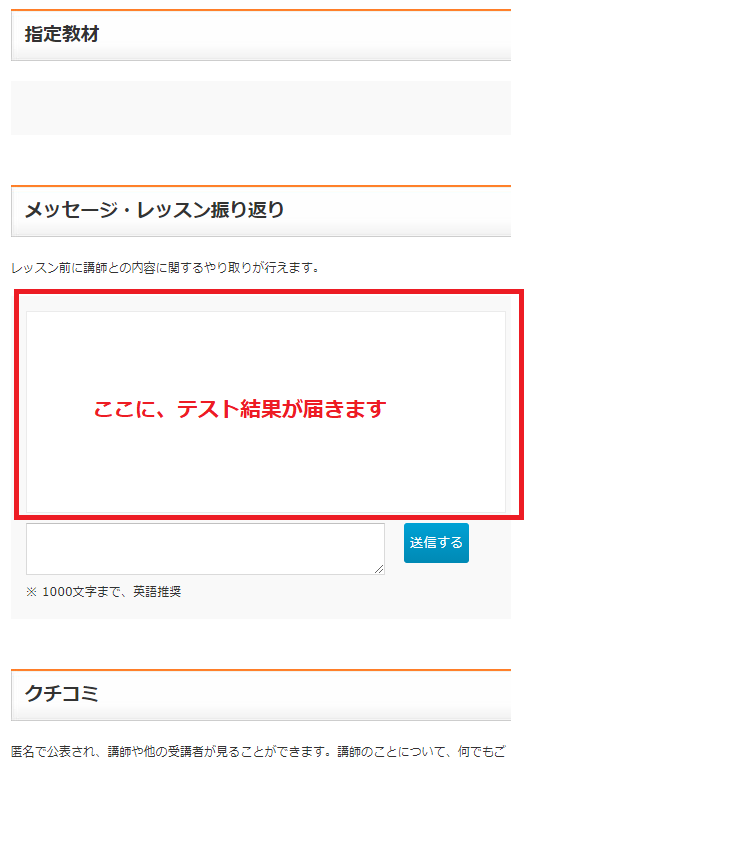
テスト結果の評価レベル

レベル
| 8 |
・レベル8では、一貫性のある表現を一般的な職場に適した形で表現することができます。
・意見に応答するときや、複雑な質問に回答するときでも、非常にわかりやすく回答することができます。
・文法は基本的なものも複雑なものも優れており、ボキャブラリーは適切で正確です。
・質問への回答や、基本的な内容を口語を用いて表現することもできます。
・発音、イントネーション、アクセントは常にわかりやすいです。 |
| 7 |
・レベル7では、一貫性のある表現を一般的な職場に適した形で表現することができます。
・効果的に意見を述べたり、複雑な問題に対して回答することができます。
・発音、イントネーション、回答内容が長くなった時に止まってしまう点は、少し改善の余地があります。
・文法が複雑になった時にもミスがあることがある点も見直しが必要です。
・音読の際は、非常にわかりやすく読むことができます。 |
| 6 |
・レベル6では、意見や複雑な意見に対する回答を求められたときでも、内容に応じた回答をすることができます。
・聞き手により分かりやすいようにするためには、発音、イントネーション、アクセントの練習を重ねる必要があります。
・ボキャブラリーを増やすためには読み物が役に立ちます。より場に適した単語を使えるようになれば聞き手にとってもわかりやすくなります。
・多くの場合、質問への回答をすることができます。
・音読の際は、聞き手に内容を伝えることができます。 |
| 5 |
・レベル5では、意見を発言したり複雑な問題に回答するために英語表現の練習をする必要があります。
・英語表現力を高め、言葉を繰り返してしまったり発言中に止まってしまったりするのを防ぐため、会話練習を重ねましょう。
・ボキャブラリーを増やすためには読み物が役に立ちます。ボキャブラリーが増えれば、より自信をもって、自由に意見を伝えることができるようになります。
・多くの場合、質問への回答をする事ができます。
・音読の際は、一般的に聞き手には内容を伝えることができます。 |
| 4 |
・レベル4では、意見を述べたり質問に回答する練習がより必要です。一つの文章で回答が出来る場合もあれば、文章が完結しないままの場合もあり、改善の余地があります。
・読み物の時間をより多くとれば、ボキャブラリーの向上と文章構成力の向上につながり、質問への回答や物事の基本的な説明がよりやりやすくなるでしょう。
・会話練習(音読など)をすれば発音、イントネーション、アクセントの一貫性が高まります。
・発音、イントネーション、アクセントを練習すれば、音読の際に聞き手のわかりやすさが大幅に控除するでしょう。 |
| 3 |
・レベル3では、自分の意見を表現することができますが、英語での自己表現力を高めるためには会話練習をもっと行う必要があります。会話中により詳細を描写することができればコミュニケーション能力が大きく向上するでしょう。
・より詳細を描写することが出来れば、より複雑な質問に対応することができます。
・文法とボキャブラリーを強化すれば、より簡単に質問への回答や情報の描写ができるようになります。
・音読や会話練習をすることで、発音や会話スピードの調整、アクセントの練習になります。 |
| 2 |
・レベル2では、スピーキング、リーディングともに大きく改善の余地があります。
・基本的な教材をより多く勉強することで、より複雑な質問に回答することができるようになり、回答内容もクリアになります。
・簡単な議論や物事の描写などを通し、ボキャブラリー、文法、発音を練習すれば日常会話、職場での会話がより容易になります。
・音読の練習をすれば発音は大きく向上するでしょう。 |
| 1 |
・レベル1では、英語での表現をするためにはまだたくさんの練習が必要です。
・焦らず練習すればコミュニケーション能力は自然に高まり、必ず英語での表現も可能になります。 |
おすすめ教材
| 8 |
テーマトークの上級、ニュース教材の上級 |
| 7 |
レベル別教材の上級、ニュース教材の上級 |
| 6 |
レベル別教材の上級、ニュース教材の上級 |
| 5 |
レベル別教材の中級、一般英会話の中級、テーマトークの中級 |
| 4 |
レベル別教材の中級、一般英会話の中級、テーマトークの中級 |
| 3 |
レベル別教材の初級~中級、英文法 |
| 2 |
レベル別教材の初級~中級、英文法 |
| 1 |
レベル別教材の入門~初級 |
>>>教材一覧を見る





